The following article covers Real-Life Deepfake Examples and the dangers of this growing technology.
From political mischief to cybercrime, deepfake technology is becoming a growing danger in the digital realm.
It’s fascinating, it’s terrifying, and it’s here to stay. This article outlines real-life deepfake examples and explores the increasing threats these pose to personal, corporate, and national security.
Deepfakes, a portmanteau of “deep learning” and “fake,” use artificial intelligence to create hyper-realistic but entirely fake audio-visual content, impersonating real individuals in ways that are rapidly becoming impossible to detect with the naked eye.
While video, audio, and images are the most common types of deepfakes, this cutting-edge technology is continuing to expand.
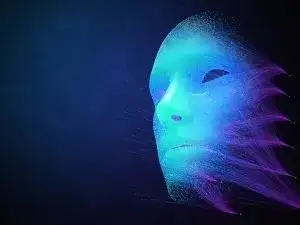
Dangers of Deepfakes
Deepfakes are becoming a tool of choice for cybercriminals, fraudsters, and perpetrators of misinformation campaigns. They have the potential to fuel ‘fake news’, jeopardize reputations, scam people, and even be used for cyberbullying.
While the deepfake technology in itself is not inherently harmful, its potential misuse is immense, increasing the necessity for stringent detection methods and digital forensics.
For information about the legality of deepfake technology, we suggest reading our guide on Are Deepfakes Illegal?
Our focus in this piece is to illuminate the extent of this phenomenon through specific “deepfake examples.”
Real-Life Deepfake Examples
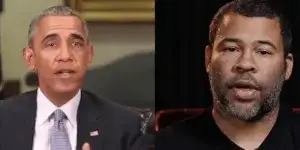
Barack Obama Deepfake
In 2018, Jordan Peele, in collaboration with Buzzfeed, released a video of former U.S. President Barack Obama.
The video initially seems genuine, with Obama delivering a public service announcement. However, the authenticity is shattered when the so-called ‘Obama’ utters uncharacteristic profanities.
It was actually comedian Jordan Peele speaking, using AI technology to mimic Obama’s voice and facial movements.
This celebrity deepfake example served as a wake-up call, warning the public about the implications of this technology.
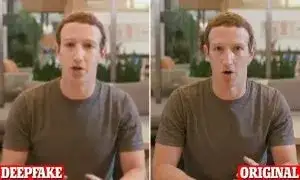
Mark Zuckerberg Deepfake
In 2019, a deepfake video of Facebook CEO Mark Zuckerberg appeared on Instagram.
The video depicted Zuckerberg saying, “Imagine this for a second: One man, with total control of billions of people’s stolen data, all their secrets, their lives, their futures.”
This deepfake example revealed the potential for manipulating public opinion about key figures in society.
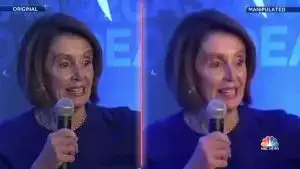
Nancy Pelosi Deepfake
A slightly different form of deepfake was used against U.S. House Speaker Nancy Pelosi in 2019.
The video was subtly altered to make it appear as though she was slurring her words, prompting baseless rumors about her health and mental stability.
This example underscores the use of deepfake technology in spreading disinformation.

Star Wars Deepfake
Deepfake technology isn’t just used for nefarious purposes. In 2020, for example, Lucasfilm used deepfakes to resurrect the late Carrie Fisher as Princess Leia in Star Wars.
Similarly, HBO used this technology to de-age actors in Westworld. Despite these innocuous uses, the risk of misuse in this industry is ever-present.
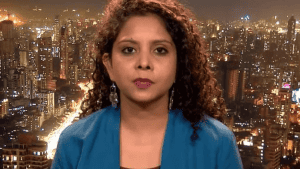
Non-Public Figures Deepfake
Deepfakes are not exclusively targeted at public figures. In 2020, Rana Ayyub, an Indian investigative journalist, became a victim of deepfakes when her face was superimposed onto pornographic material.
This horrifying incident highlights the serious risks deepfakes pose on personal levels, including blackmail and character assassination.
Real-Life Deepfake Examples – Final Thoughts
Deepfake technology is undoubtedly a double-edged sword. While its advancements bring fascinating possibilities, they also unleash unsettling potential for exploitation.
These deepfake examples serve to remind us that as the technology evolves, so too must our awareness, our skepticism, and our digital forensics tools.
We must navigate this digital frontier with vigilance and caution, lest we fall victim to a world where seeing is no longer believing.
Real-Life Deepfake Examples FAQs
What is a deepfake?
A deepfake is a type of artificial intelligence (AI) that uses machine learning to create or manipulate videos or audio in a way that makes it look or sound like someone is saying or doing something they never actually did.
What are some real-life examples of deepfakes?
Some real-life examples of deepfakes include:
- A video of President Barack Obama giving a speech that he never actually gave.
- A video of actress Gal Gadot saying that she supports a certain political candidate.
- A video of a celebrity saying something offensive or embarrassing.
- A video of a news anchor reporting on a fake event.
- A voice recording of a politician making a false statement.
How are deepfakes created?
Deepfakes are created using a variety of AI techniques, including facial recognition, image manipulation, and machine learning. The process typically involves collecting a large amount of data, such as images or videos of the person whose face is being manipulated. The AI software then learns to identify the features of the person’s face and create a new video or audio clip that matches those features.
What are the potential dangers of deepfakes?
Deepfakes have the potential to be used for a variety of malicious purposes, such as spreading misinformation, defaming people, or creating fake news. They could also be used to impersonate someone in order to commit fraud or other crimes.
What are some ways to spot a deepfake?
There are a few things you can look for to spot a deepfake:
- Inconsistencies in the person’s facial expressions or movements.
- Blurred or distorted edges around the person’s face.
- Unnatural skin tones or lighting.
- Audio that doesn’t match the person’s mouth movements.
It is important to be aware of the potential dangers of deepfakes and to be able to spot them. If you see something that seems suspicious, it is best to err on the side of caution and assume that it is a deepfake.